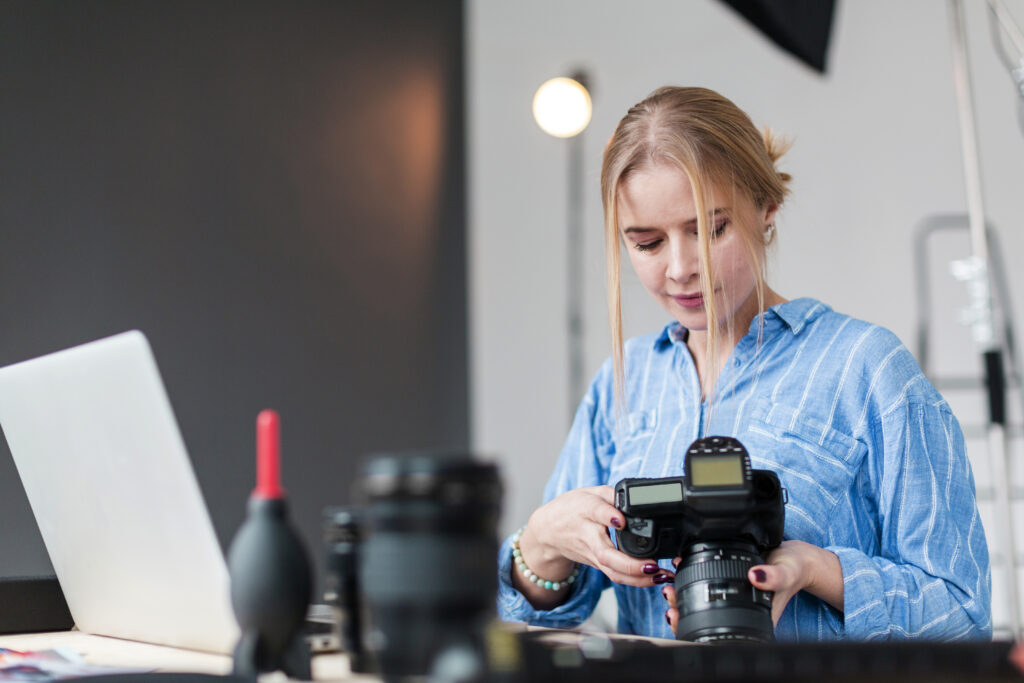Several media workers utilize the potent picture editing program Photoshop on a global scale. It offers a wide range of features and tools that can help enhance, retouch, and manipulate images. In this post, we’ll look at some practical hints and techniques that media professionals may utilize to streamline their processes and create photographs of the highest caliber.
photoshop advanced tips Follow these steps:-

Understanding the Workspace
The first step to becoming proficient in Photoshop is understanding the workspace. Photoshop has a complex interface with various panels, menus, and tools. Your workflow may be sped up and the editing process can be made more effective by being aware of the functions of each panel and tool.
Customizing the Interface
Customizing the interface to suit your needs is also crucial for improving your workflow. You can rearrange panels, create custom workspaces, and save them for future use. You’ll do that to spare time and center on the assignment you’re doing right presently.
Keyboard Shortcuts
Keyboard shortcuts are another essential aspect of Photoshop.
By enabling you to complete activities fast without having to use menus and panels, they can help you speed up your productivity. It can be quite time-efficient to learn and memorize some of the most widely used shortcuts.
Learning how to use Photoshop fast and effectively should be one of the first things any user does. Here are some of the essential shortcuts to help you get started:
- Ctrl+J (Cmd+J on Mac) – Duplicate Layer
- Ctrl+T (Cmd+T on Mac) – Free Transform
- Ctrl+Z (Cmd+Z on Mac) – Undo
- Ctrl+Shift+E (Cmd+Shift+E on Mac) – Merge Visible Layers
- Ctrl+Shift+Alt+E (Cmd+Shift+Option+E on Mac) – Stamp Visible
Non-Destructive Editing
Non-destructive altering may be a strategy for adjusting a picture without changing the basic picture information. This can be done using adjustment layers, layer masks, and smart objects. Non-destructive editing guarantees that, if necessary, you can always go back to the original picture data.
Using Layers
One of the most crucial components of Photoshop is layers.
They make it simpler to make modifications and alterations since they let you work on various aspects of a picture individually. Learning how to use layers effectively can help you create complex compositions and manipulate images with ease.

Understanding Color Modes
Understanding color modes is crucial when working with images in Photoshop. RGB and CMYK are the two commonly utilized color alternatives in Photoshop. CMYK is used for print, whereas RGB is used for digital pictures. To create high-quality photos, it is crucial to comprehend how to convert between the two and how their differences differ.
Masking Techniques
Masking is a technique used to hide or reveal parts of an image. There are various masking techniques in Photoshop, including layer masks, vector masks, and quick masks. Learning how to use masking effectively can help you create complex compositions and manipulate images with ease.
Filters and Effects
Filters and effects can be used to add creative effects to your images. You may apply a variety of filters and effects in Photoshop to improve your photographs. It’s vital to utilize them sparingly and only when required to avoid overediting.
Batch Processing
Photoshop has a function called batch processing that enables you to make the same modifications to several photos at once. When dealing with a lot of photographs, this may save a tonne of time.
Saving and Exporting
Saving and exporting your images correctly is crucial for producing high-quality images. You can save your photographs in the best format for their intended usage by being aware of the various file formats and compression options available in Photoshop.
READ ALSO:-Best Photoshop tutorials for social media graphics
Conclusion
For media pros, Photoshop is a potent tool, but it may be intimidating for new users. Understanding the workspace, customizing the interface, using keyboard shortcuts, non-destructive editing, using layers, understanding color modes, masking techniques, filters and effects, batch processing, and saving and exporting correctly are all essential skills for becoming proficient in Photoshop.
FAQs
Q. In Photoshop, what is non-destructive editing?
A. You can alter a photograph without changing the original image data by using non-destructive editing.
Q. How can the Photoshop user interface be modified?
A. By moving panels about, making your workplaces, and storing them for later use, you may personalize the interface.
Q. What is the greatest method for learning Photoshop?
A. A wide run of online assets is accessible, counting instructional exercises, gatherings, and courses. Starting with the fundamentals before moving on to more complex approaches is crucial.
Q. Is Photoshop compatible with tablets and smartphones?
A: Photoshop is accessible on mobile platforms for iOS and Android smartphones. Although they might not have all of the functionality seen in the desktop version, can still be helpful.
Q. How can I make my Photoshop workflow faster?
A: You can speed up your productivity by using actions and scripts, learning keyboard shortcuts, and arranging your workspace.




